
Menu |
Hyde Park - central
Located bang right in centre of London, Hyde Park is surprisingly dog friendly, except in children’s play areas of course. In fact it is the park to parade the Corgis, the Vizsla or the rare breed Chinook. There are plenty of great cafés (two around The Serpentine) although you might want to keep them on a leash around the famous lake in case they leap in to chase the ducks. You’re also advised to bring a baggie as poop-and-run is frowned upon, especially in the summer months when there are picnickers and sunbathers galore.
Plan your dog walk in Hyde Park here. More on dog control in the royal parks

Victoria Park - east
Vicky Park, as it’s known to east enders, is a social hotspot for outgoing canines and their owners alike. It’s split into two parts: the western half is landscaped with a fantastic organic lakeside café, boating lake and picnic areas in the summer, while the eastern half is more suitable for dogs and has larger expanses to run on. Be advised to carry a doggie bag though as there’s an open-ended children’s adventure playground (dogs are not allowed) and plenty of green area given over to sport. The Kenton is an excellent local dog-friendly Norwegian pub but most pubs around the park have outdoor eating areas.
More info on Victoria Park

Richmond Park - west
Richmond Park is the biggest royal park in London (a staggering 2,500 acres to get lost in) and has been a royal hunting enclosure since the 13th century. It is still home to shoals of red and fallow deer and boasts some fantastic oak trees. You can let the dog off the leash to run amok but are expected to be able to prevent them from chasing the deer (remember that Fenton video on Youtube? "Fenton! Feeeennnnton!") King Henry’s Mound offers unparalleled views of London if you can take the gradient and Isabella Plantation is a stunning 40 acre Victorian plantation with rare flora and little streamlets to explore. Dogs are allowed here on the lead.
Plan your walk at Richmond Park here. More on dog control in the royal parks
Regents Park / Primrose Hill - central
Designed by John Nash, Regent’s Park covers 395 acres and is perhaps the most picturesque of central London's parks with glorious flower beds and the famous Queen Mary’s rose garden with over 1000 varieties. There are plenty of places to let your pooch run free (especially on Primrose Hill where locals after work) but dogs should be kept on leads in the formal gardens and sports areas. There is plenty of choice for outside dining avec chien including The Boathouse, The Smokehouse, the Hub Cafe and the Regent’s Bar Kitchen.
Plan your dog walk at Regents Park here
Peckham Rye Park and Common - south
This Victorian Park has recently been restored to its former Victorian glory with Lottery money. At 113 acres it is south east London’s biggest green zone and it has loads to offer: woodlands, a lake, formal garden and the Café on the Rye. The arboretum is a canine-free zone but the lovely Japanese garden isn’t, and there are plenty of other trails to take: Southwark council even provides a handy trail map
Plan your dog walk in Peckham Rye Park here.
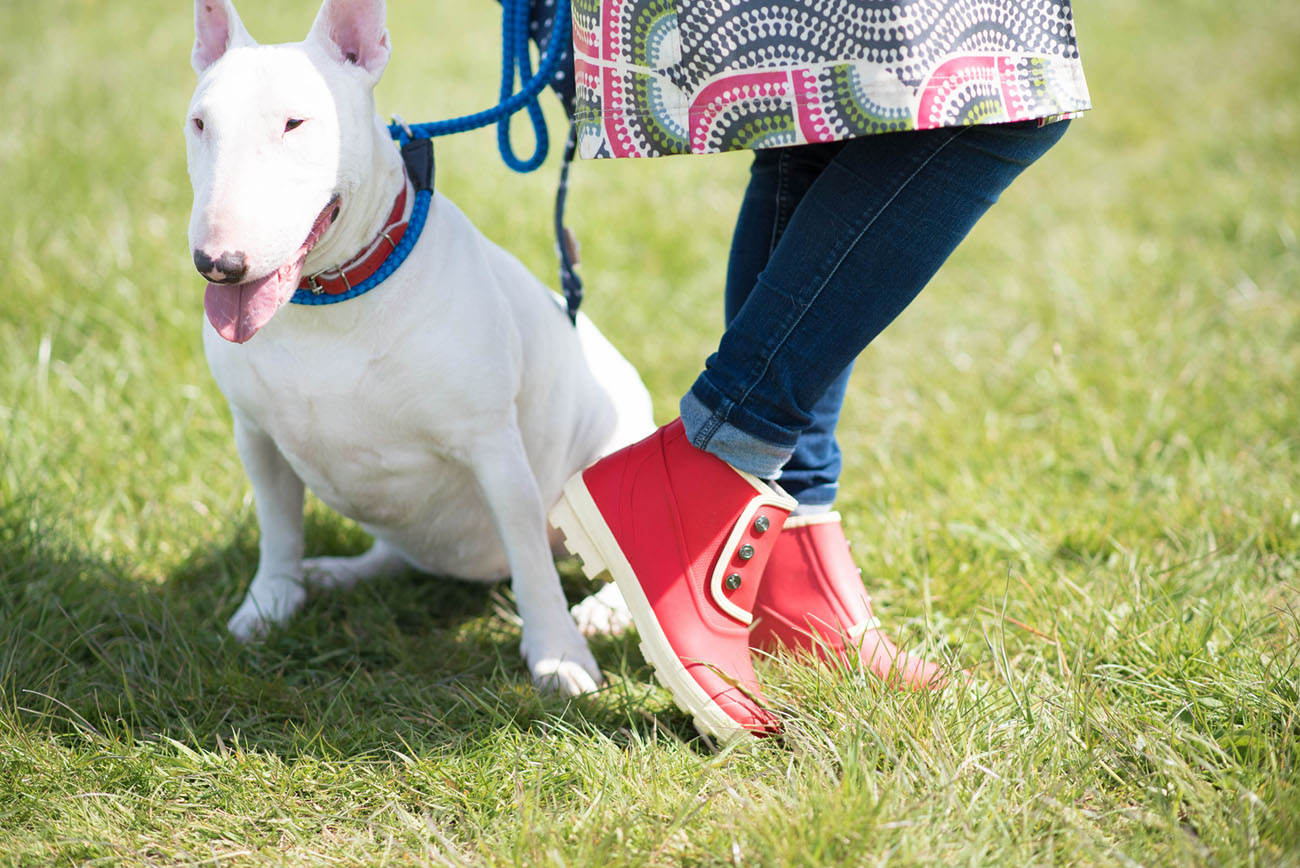
Hampstead Heath - north
North London would not be north London without the historic heath. It first entered history in 986 when Ethelred the Unready gave one of his loyal servants “five hides of land” at “Hemstede” and has since been featured in more works of fiction than any other park in England (probably). A wild and rambling slice of countryside with hills, woodland, lakes and meadows and its own stately home, Kenwood House, to boot. Karl Marx and poet John Keats would come here to gain inspiration and but your dogs will appreciate it on an altogether more fundamental level.
More info on dog walks on the Heath
Battersea Park - central
A veritable pleasure garden on the banks of the Thames, this is where the Chelsea set come to exercise their precious pooches and to hang out in one of its cafes. It’s a flat park but there are plenty of places to run and hidden places around the ornamental ponds and their exotic plantations, which are home to a menagerie of water birds. The Pear Tree circular café has recently reopened with a large outdoor space.
More info on walking in Battersea Park

Lee Valley Park/Walthamstow, Hackney and Tottenham Marshes - east
The Lee Valley Regional park is actually the largest of Greater London’s parks and links Hackney Marshes to the charming Springfield Park and Marina, on to Walthamstow Marshes and Tottenham Marshes via the River Lea and the canal network. Walthamstow Marshes (37 hectares) is surprisingly wild and is a wonderful place to let the dogs run free and Tottenham Marshes has protected wetland areas and wildflower meadows. There are great pubs and watering holes along the canal and Springfield Park has a nice café on top of the hill.
Plan your visit to the the Lee Valley Park. Longer Walks around the Lee Valley

Wimbledon Common - south west
Who wouldn’t want to womble on Wimbledon Common, the largest expanse of heathland in London? Encompassing Putney Lower Common and Putney Heath, the conversation area covers 1,140 acres and supports a variety of wildlife, areas of mature woodland, ponds and bogland. You’ll cross paths with horse riders here as well as school children on nature trails and foragers in the autumn. If you start out from Putney, there’s a lovely walk to Wimbledon windmill with dog-friendly tearooms to reward the foot-sore.
Plan your dog walk on Wimbledon Common here
Thames Path at Barnes - south west
A well-trodden path by well-heeled dog owners who live locally but little known about outside the postcode. We suggest starting the Thames path (going west towards Chiswick) from the lovely Victorian Hammersmith suspension bridge or Barnes Bridge. The walk offers the most pleasant, leafy views of the river, and is lined with fabulous trees which have grown huge due to the abundance of water. If you’re feeling energetic you can walk all the way to Twickenham, - there are plenty of riverside pubs to stop at, several of which allow dogs on the lead.
More info on dog walking on the Thames Path from Barnes
Corsets were a popular fashion trend in the 1800s designed to create a sexy hourglass figure by pulling in the waist and augmenting bust and hips. Today, corsets are growing in popularity again and can be worn both under or over clothes, as a top or a dress in itself. Apart from being a major fashion statement, they also give the appearance of killer curves. Here are five fabulous ways you can wear them:

1. Corsets and Skirts
Corsets can also be worn with different skirts. Team them with a high waisted pencil skirt in the same colour to fake the appearance of a dress or wear it with a different colour to make it pop. You can also wear it with a full circle skirt, making a classic style look extremely sexy. However, be careful while wearing a corset with a mini skirt. The corset itself is loud enough so make sure to tone it down a little.
2. Corset dress
Corset dresses are popping up everywhere in different shapes, styles and colours. These are perfect to enhance your curves. They are simple but certainly make a very effective statement.You can also wear your corset over a plain, boring dress to instantly jazz it up. Wear a floral corset over your plain white dress or a leather corset over your patterned unflattering dress. Don’t be afraid to experiment with various materials, bold patterns, colours.

3. Corset and Jeans
Wear it as a top with jeans to make it a sexy feature piece for an evening out. If worn with high-waisted jeans it looks like a jumpsuit-with-attitude. If you don’t feel comfortable exposing your arms or shoulders, then throw on a jacket or a blazer. Go for different fabrics, from cotton to steel-boned. Wearing corsets can enhance your femininity and confidence. Make sure you buy them according to your body shape and type to ensure they’re effective, comfortable. Nail the season’s hottest Kardashian inspired trend and make heads turn!

4. Underbust Corsets
Underbust corsets are worn just below the bust and usually end at the beginning of your lap. They are very versatile but look particularly good when worn with a black or white frilly shirt. You can also wear them with almost any dress or skirt to give your bust a lift as well as the illusion of a slimmer waist. A classic piece of clothing like this is a great investment and a must-have.
5. Bridalwear
Corsets can also be a part of your bridal costume. Wear it under your bridal gown or over it to create a classic hourglass shape. A corset made up of smooth polyester, satin or nylon will work best under a gown. Opt for a pale pink or white corset so you can match your skin tone perfectly under a sheer bridal dress. It will definitely be unique and sex-up traditional bridalwear.
Author Biog
Rebecca Siggers is an avid reader who enjoys getting lost in the world of books. Holding on to her passion for fitness, she is also caught by the fashion bug. She has been writing for True Corset for some time now. A traveller by heart, she enjoys meeting new people and experiencing new cultures.
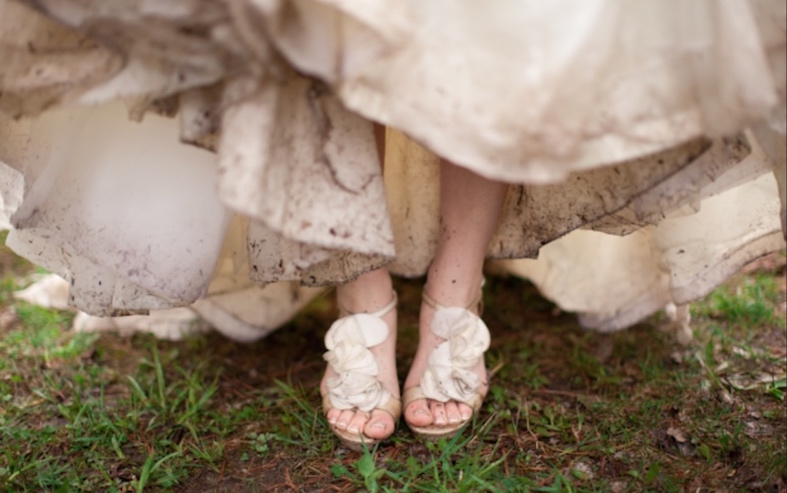

Happy days! English country weddings would not be complete without a downpour, lakes of mud and a marquee that tips a freezing water down your back as you tuck into the wedding cake. This year, why not spare those expensive Louboutin heels and get some stylish wedding wellies that will not detract from your sartorial élan (unless a good mud wrestle is part of the plan...)

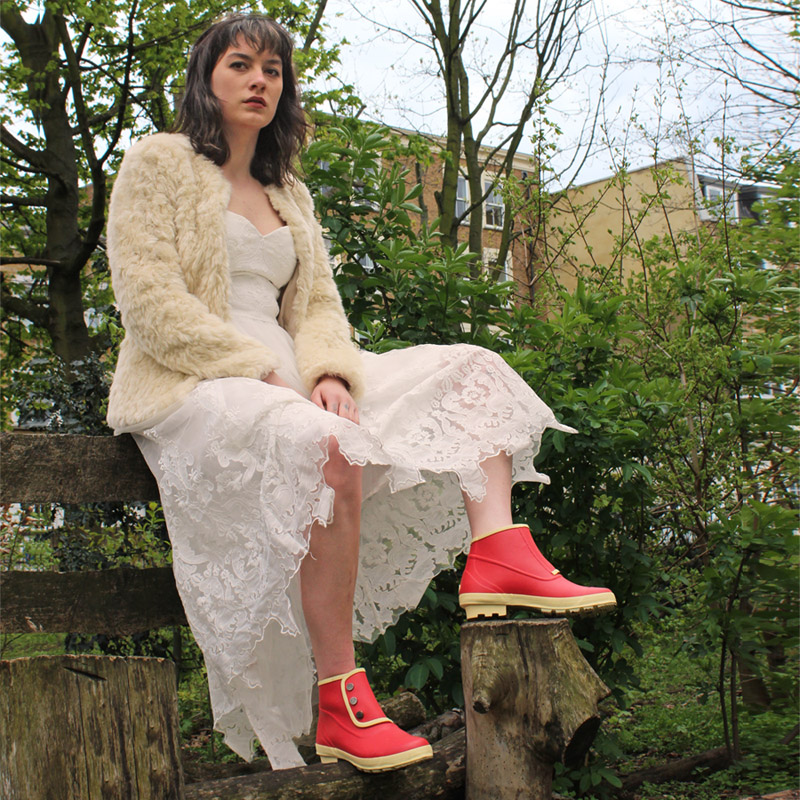
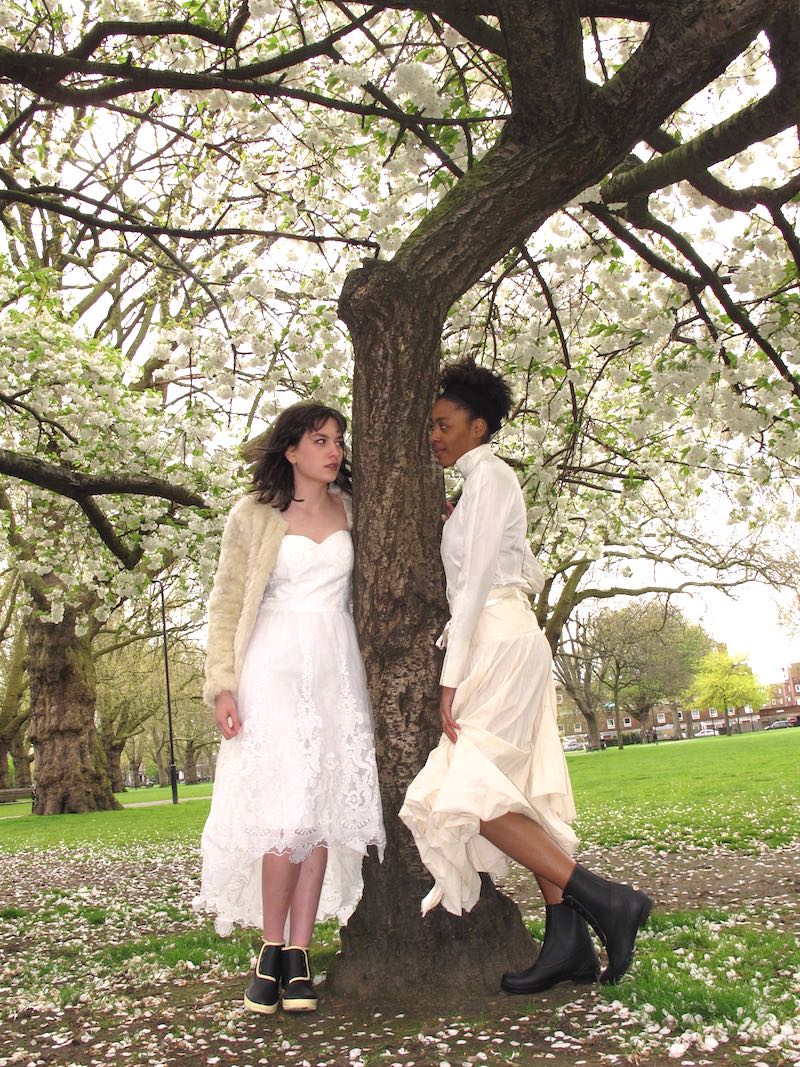

Three cheers for the great brown British wedding!

24th April is the start of Fashion Revolution Week, a global movement which celebrates fashion as a positive influence and celebrating brands who are on a journey to create a more ethical and sustainable future for fashion. 24th April commemorates the Rana Plaza disaster in Dhaka, a terrible day in 2013 when a building housing sweat shops collapsed killing 1,134 and injuring 2,500. To see who made your boots check out About Spats #whomademyclothes
In the meantime we're celebration the top 10 sustainable fashion brands we love:
Born out of disaster, Deux Mains is an employee-owned footwear company in Port-au-Prince, that was set up in the wake of the terrible 2010 earthquake in Haiti. REBUILD Globally provided the start-up capital and the founders and their artisan partners did all the rest. They make beautiful sandals and slip-ons out of upcycled tyres, locally sourced leather and steadfast dyes. They recently collaborated with Kenneth Cole. Prices from £30 - £60.

Proud to be “genuinely not leather”, Beyond Skin have been injecting a little glamour into the vegan shoe market since 2012 with theirs super-cute faux leather shoes. Dynamic duo Natalie Dean and Heather Whittle set up the brand with a passion to change the footwear industry. They're serious about reducing their carbon footprint by sourcing fabrics locally to their factories in Spain. Prices ranging from £95 - £135.
Catwalk meets traditional African footwear made by tribesmen. Using local, sustainably sourced leather from kudu, rabbit or springbok hide, organic cotton and sustainably sourced components (the classic Maasai sandal is made from discarded tyres), this right-on US brand is making strides and creating employment opportunities in Southern Africa.
Asher and Galahad Clark, two cousins related to the famous footwear family, set out to create "the perfect shoe", starting with a supple and carefully engineered rubber sole which allows the foot to function as a foot should. They are committed to being fully sustainable throughout the production chain, although they admit they aren’t there yet, despite having sold 1M pairs since launching in 2012. You can buy a piece of their success via their CrowdCube campaign.
This husband and wife team from Brooklyn started making their woven shoes in Guatemala with one cobbler. Now with 30 employees, they’ve widened their range and use reused materials from thift stores as well as Latin American fair trade woven fabric. $100 - $200.

The world’s first Fair Trade Certified™ footwear manufacturing factory, Oliberte bring fair employment to sub-Saharan Africa. They make lovely soft wild goat leather shoes from moccasins to slip ons from $79 to $150 .They now have their own factory in Addis Ababa, Ethiopia. “We believe in empowerment, transparency, and doing right by all.”

Sandals for yoga bunnies… two brothers whose families come from Kerala launched a flexible rubber flip flop based on an ancient Indian sandal and make it with rubber from their families' rubber farms. They also plant a tree for every pair sold. Cool.
Inspired by recycling and the 3D printing revolution, these are shoes which are made from removable, recyclable components, designed to break into parts so that when your heels wear out you can simply clip a new one on, or if you feel like a two-tone look you can re-accessorise your basic trainer. The designs are a bit clunky but the vision - to reduce landfill and save energy - is admirable.
A French company who have been making the coolest retro looking trainers out of eco and sustrainable materials for 10 years. The shoes are made in Brazil and use wild Amazonian rubber soles and recycled cotton. Euro 75 – 200.
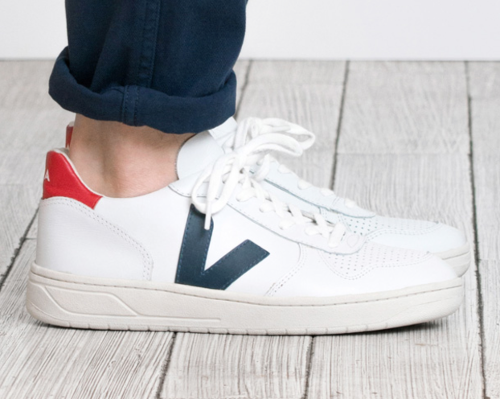
This London based company make classic shoes which are 100% vegan, PETA approved and made by their factory in Portugal. Worn by Natalie Portman and Bryan Adams!
Footnote:
We love Marks and Spencer's first sustainable trainer not because of the way it looks (the floral design is a bit tame) but because the high street giant has pushed the boat out with this model using a flexi sole which uses rice husks, a lining made from recycled coffee grounds and recycled plastics and PU foam inside the leather outer (which comes from gold standard tanneries). And they are committed to the sustainable brand.
If you're still vacillating about Christmas presents take a look at what Charlotte Abrahams from FT's How to Spend It has to say...

We love this fashion blog by the incredible Boyer Family Singers, three sisters from Ohio who have more flair for putting cute vintage outfits together than the costume department of BBC1's Call the Midwife. Go Girls!
What do the Boyer sisters say about their new ankle wellies? "Overall we girls are amazed at the wonderful quality and vintage style of Spats Boots. They aren’t just a pair of shoes that look vintage, they have the quality of true vintage as well, which makes them worth every penny."

Jessica styled her Spats with a classic Swing Dress, that echoed the colors of her Chocolate and Sky boots. All of us girls wore ankle socks with our boots to keep the edges from chafing our legs. Did I mention that the Spats have a nice fleecy lining in them? And both of the girls got fleece insoles to add to their boots to help them fit better and make them cozier.
One thing that is important when wearing ankle boots of any sort, is to make sure that your clothing is proportioned in such a way so that it doesn’t make you look like you have fat ankles. All of us girls succeeded in this by keeping our skirts just below our knees. If our skirts had been ankle length, things may have looked a bit more awkward, but by keeping that space between boot and hemline you create an ensemble that is more pleasing to the eye.
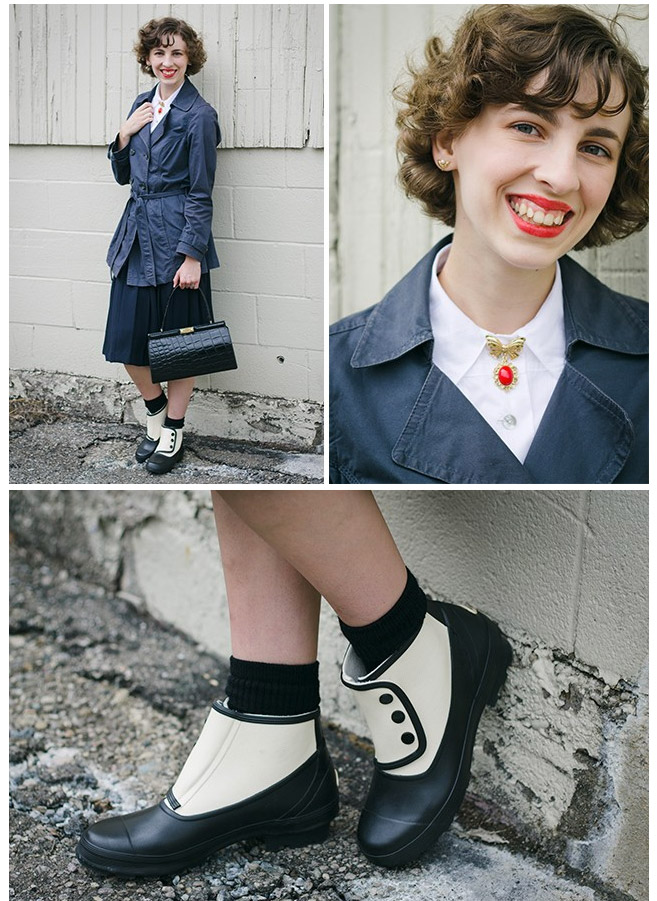
Brigid went for a 1930s secretary look with a pleated skirt and white blouse. I really wanted my black and white Spats Boots to be the focal point of my outfit, so I kept any pop of color to just my lipstick and brooch.
My Spats were SO comfortable and warm to wear. I was really concerned that my feet would slip around in them, or that they would be too big in the ankles, but all my fears were allayed with these lovely boots. The toe portion is sufficiently snug to keep them on your feet, but not be too tight when wearing thick socks, and the ankle portion is loose enough, but not too loose, to be perfectly comfortable when walking. Plus, the soles are rubber, so they are very cushy and soft to walk in.

Charlotte styled her Spats in a way that I like to term French Resistance. Maybe it’s the beret or the military green, but something about her outfit just reminded me so much of a young lady from 1940s France. Charlotte also created nice rhythm in her outfit by echoing the red of her Spats Boots in both her purse and in her choice of lipstick color. By echoing a color or theme one to two times in your outfit, as Charlotte did here, it helps to draw your eye up to the face of the wearer, while also creating a cohesive ensemble.
http://boyerfamilysingersblog.com/2015/10/sister-flair-spats-boots/
Well not to Chelsea...actually just around the corner from our offices in Ridley Road market, Dalston.
Our marketing assistant Elizabeth models the smart new Spats Chelsea boot which will be launched in the spring.


